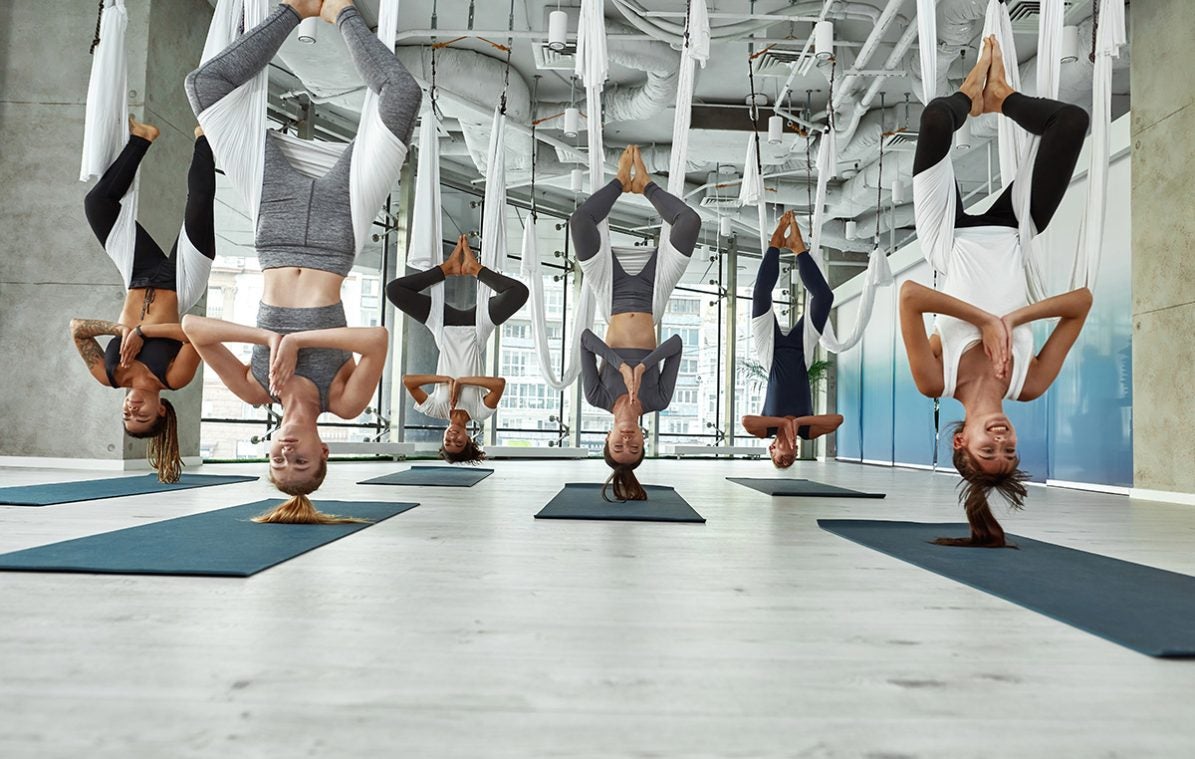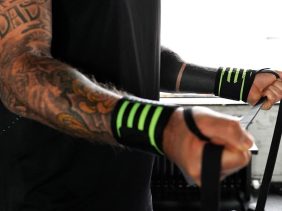How Aerial Yoga Awakened My Inner Child
 ©LanaStock
©LanaStock
It was the first time I visited the small yoga studio in the middle of Kreuzberg, in Berlin. Instead of yoga mats all lined up, I gaped at a room full of slings dangling from the ceiling. Then off we went with my first aerial yoga class. “Just do it,” I thought as I placed the sling around my waist like the yoga instructor had showed us. I prepared myself to hang head down above the floor at any moment; it was the hanging part that worried me most before I began. But as someone training to be a yoga instructor with an appetite for all things new, I was daring enough to try this acrobatic form of yoga. Despite (or perhaps, because of) my uncertainty, it was definitely worth it.
Read more: 7 things I didn’t know before I completed yoga training and how they have enriched my own practice and everyday life.
What is aerial yoga anyway?
Aerial yoga is in vogue in its country of origin – the USA. This form of yoga combines acrobatics and traditional yoga and is also known as air yoga and anti-gravity yoga. Clearly, it lives up to its name as you hang in the air with a free feeling of weightlessness. For this to happen, a sling is attached to a ceiling bracket for you to use for support, stretching, or wrapping yourself in. You can practice a variety of asanas like this, primarily what’s known as the inversion poses. These are positions which change your line of sight, such as the downward facing dog. According to yoga philosophy, inversion poses help you gain a new perspective and more clarity, among other benefits. Hanging also relieves pressure on the spine and joints and helps you literally let go. Sounds great, I thought – I have to try that!
So how did my first lesson go?
I was particularly fascinated by the acrobatic elements. Granted, I looked anything but graceful in my first session, but it was fun nonetheless. It took me some time before I trusted the sling. The yoga instructor had us just sit in it initially, which helped me realize that it would be able to hold me, and reassure myself. When we’d done that, we moved on to unrolling the sling and lying in it, as if we were in a cocoon. That was amazing: I felt safe and really relaxed. Nothing could stop me now.
I completed the first asanas without any problems, but then came the “inverted butterfly”. This is an asana or pose that’s often practiced in aerial yoga. To get into the pose, you bend in the middle and open your knees outwards like a butterfly. That’s not all though. You lean your entire weight forward and fall forward to come into the inverted pose. Once in the final position, you’re hanging upside down in the air. For me, this was a real test of courage. I was already hanging in the air with my legs bent. I was unstable and now I was supposed to let myself fall forward? No thank you!
How I found my way back to my inner child
I dangled in my butterfly pose (as yet uninverted) and looked around the room. Everyone else was already hanging upside down except me. Then I realized that I was more than physically capable of falling forward. All that was stopping me from doing so was my mind: I had to let go of my fear. And that’s what it was all about.
Suddenly, I thought about my kids. They don’t get worried; they simply get on with things and try things out because they’re curious. I was curious too. I wanted to know what it felt like to hang upside down, so that’s how I approached it. No biggie, just get it done so you know what it’s like. Try something new. I gathered all my courage and dropped into the “inverted butterfly”. And then there I was, hanging upside down. I was the last to get there, but it was the process that mattered.
My conclusion
Honestly, I’m not sure if I’ll go to aerial yoga again. I think I prefer the Vinyasa flow, because I like synchronizing my breathing with the moves and to be in an almost meditative state. I missed this during aerial yoga, but I’m still glad and grateful to have had this experience. It reminded me that I often think too much beforehand and that it’s worth trying new things and just letting things happen. I’ve tried to maintain an attitude of staying curious ever since.
As a yoga instructor in training, this is something I’d like to pass on to future students. Whether aerial yoga or another form of yoga, there will always be poses that seem very demanding and impossible at first glance. They may be inversion poses or even asanas that require a lot of balance or require you to open your chest wide. What seems hard to us is a very personal thing. Embrace your emotions, but don’t let them overwhelm you. Emotions are fleeting. Explore your own limits and be curious, without building expectations or putting pressure on yourself to get an asana just right. It’s the process that counts!
More interesting articles from foodspring:
Sources for this article
We at foodspring use only high-quality sources, including peer-reviewed studies, to support the facts within our articles. Read our editorial policy to learn more about how we fact-check and keep our content accurate, reliable, and trustworthy.





























